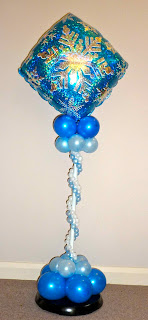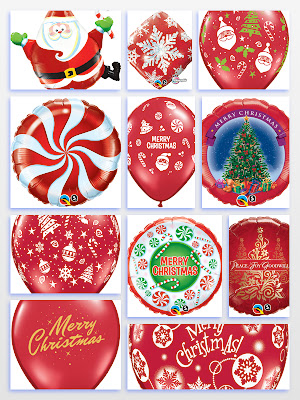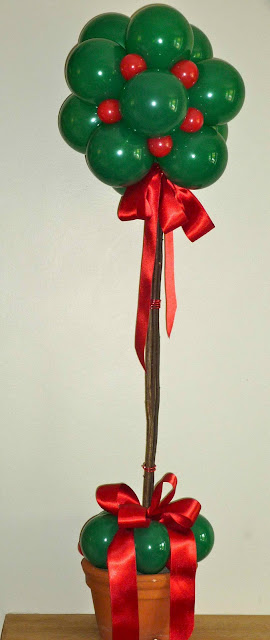Earlier this week, I was given the honour of taking part in the Q Corner Convention as part of the Design Panel discussion group alongside Tope Abulude, Cam Woody and Aleks and Nelly Hernández.
The first question we were asked as a group was "Which of the Principles and Elements of Design is the most important to a creation and why?"
This got me to thinking... how many balloon artists actually consider the basic principles and elements of design when making their decor? Is this something that many of us naturally do, or should it be considered more frequently?
So, let me put this to you in a different way - have you ever made a design or decor that does not look right, and while you know something is not quite right, you can't quite put your finger on it? Knowing the basics can prevent this from happening!
So what are the Principles and Elements of Design?Creating the 'perfect' design is not something that just happens, at least not for most of us anyway! There are a number of factors that can help to make a design 'perfect,' so let's take a look at what those factors are!
Principles of Design: The basic principles of design include words such as unity, proportion and scale, balance, rhythm and harmony.
Elements of Design: These are the physical make-up of the design. You can touch or see the elements of design. These include colour, line, shape and texture.
By applying the principles to the elements of design, it will bring them together into one design. How you apply these principles determines how successful a design may be!
Principles of Design
 |
Sculptured Balloon Column
By Sue Bowler |
ProportionProportion is one of the easier design principles to understand. Simply put, it is the size of each elements in relation to one another. Proportion signals what is important in a design and what is not. In he typical design, larger elements are more important than the smaller elements.
Scale
Scale refers to the size of the overall design in relationship to its surroundings! If a design is too big in its space, it will look overpowering. Too small small, it will look insignificant.
Balance
Balance is the visual and physical stability of a design. The visual stability of a design refers to how the mechanical stability of the design, and whether or not it will easily fall. A design with symmetrical balance should have the same amount of visual weight on both sides. Designs with asymmetrical balance will not mirror the design on both sides.
Remember that darker colours will have more visual weight than lighter colours; therefore, the darker colours belong at the base of your design since they appear heavier.
Rhythm
The spaces between repeating elements can cause a sense of rhythm to form, similar to the way the space between notes in a musical composition creates a rhythm. There are five basic types of visual rhythm that designers can create: random, regular, alternating, flowing, and progressive.
Movement
Movement refers to the way the eye travels over a design. One essential element should lead the eye to the next element and so on. This is achieved through positioning; the eye naturally falls on certain areas of a design first. |
Table Centrepiece Design
By Sue Bowler |
Unity
Unity refers to how well the elements of design work together. Visual elements should have clear relationships with each other in a design. Unity also helps ensure concepts are communicated in a clear, cohesive fashion. Designs with good unity also appear to be more organised and of higher quality than designs with poor unity.
Elements of Design
Colour
To effectively use colour in design, it is important to understand what it is and how it works. Colours are visually perceived as advancing or receding. Warm colours such as red, orange, and yellow advance, or appear closer.
Cool colours such as green, blue and violet recede or appear farther away. When making a design, the goal is to create colour harmony. The four most basic colour harmonies are monochromatic, analogous, complimentary, and triadic.
The centrepiece design shown is using a monochromatic colour harmony. A monochromatic colour harmony consists of one hue (colour) and its tints, tones and shades.
Texture
Texture relates to the surface quality of each component of a design. Contrasting or opposite textures should be used (e.g. rough and smooth, shiny and matte) to create impact within a design. While balloons themselves have limited textural differences, there are many other ways to create texture within your designs. The texture of latex balloons is smooth and soft, but by adding elements such as tulle, ribbon, fabric, flowers, or feathers, you can create contrasting texture and a greater visual impact.
The design shown has a number of varying textures, such as shiny confetti inside the Deco Bubble and the addition of greenery and flowers within the design - all of these elements adds texture to the design.
Space
Space is the open area, or void around each element of a design. Space allows each element to stand apart so it can be seen and appreciated while still giving the impression of unity. Without space, the eye can have difficulty finding the focal area or rhythm of a design. There are two types of space: positive and negative space. Positive space refers to the shape of an object or the area that is being utilised by balloons and other decorative elements. Negative space is the empty space surrounding the design components.
Line
A line is the described path in a design that the eye should clearly follow. The line provides the framework or outline of an arrangement, as well as a visual path to follow.
A design can have one line or a combination of lines with one being dominant.
Lines can be:
Vertical - creating drama
Horizontal - representing tranquility
Diagonal - expressing uncertainty
Curved - reflecting grace
Form
Form refers to the shape of each element in a design. Form can be divided into three separate categories.
Round: A round composition is one of the most common shapes. It is designed to be viewed from all sides. Round designs are often used for centrepieces on circular tables.
Triangle: Triangular designs are usually viewed from only one side, so they are often used as a focal design on a pedestal or banqueting table.
Oblong: Oblong shapes are low, long and horizontal and usually symmetrically balanced. This style of design is especially suitable for a rectangular space.
And finally, HarmonyHarmony is the physical compatibility of the elements within your design. In other words, it is how the Design Elements (form, line, space, texture, and colour) relate to one another in an agreeable way. Creating harmony within a design also helps bring about unity. Every element within a design should coordinate and complement each other. Harmony. is created when all the Elements of Design are applied successfully!
So in conclusion, to make the perfect design you need to consider and apply the Principles and Elements of design and if for any reason you are unhappy about a design that you have made think about why and what you can or could have done to make it better!
I will be 100% honest, it took me quite some time to fully understand and have the ability to apply the principles of elements of design to my own work, and I can promise that I do not always get it right! But having an understanding can really help you to master design and become an even better balloon artist!
Thank you for reading this post and I hope that it has helped!
Happy Ballooning!
Sue
























